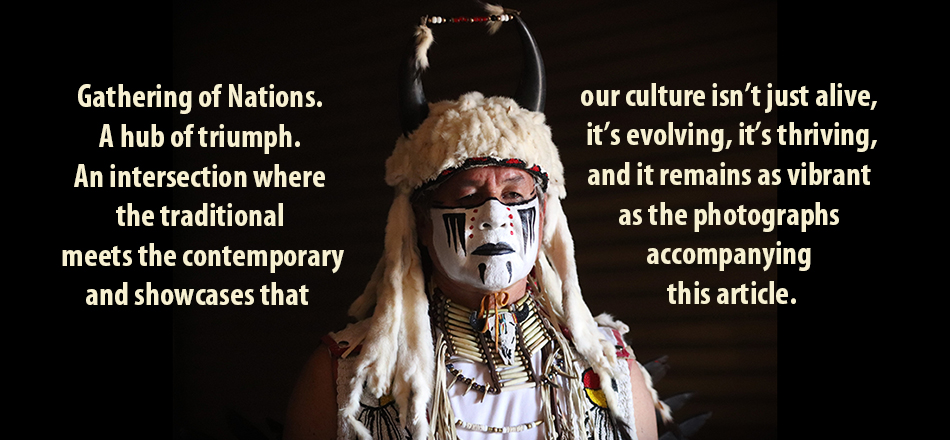
By Micheal Rios, Tulalip News
Last issue, we detailed in great length how Gathering of Nations, the largest powwow in North America, is a cultural celebration of shared indigenous identity. A thriving hub of triumph showcasing tradition, Gathering calls to thousands of proud culture bearers every year.
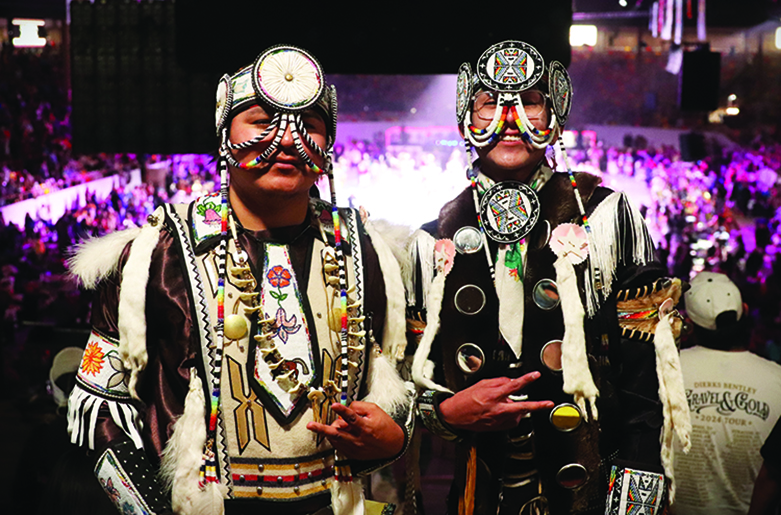
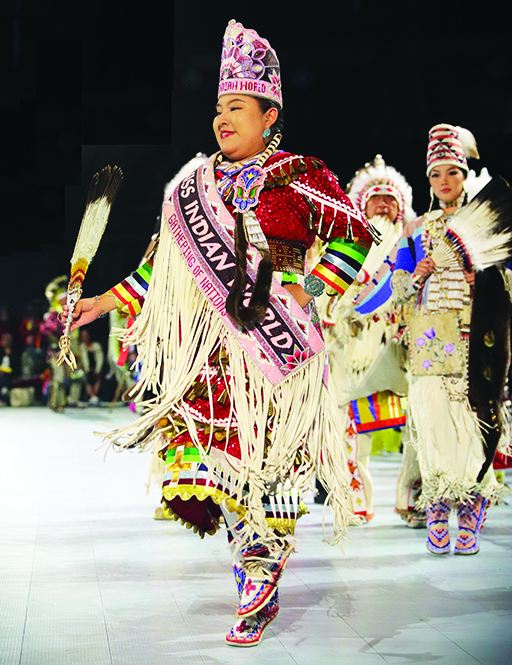
Of course, there is a constant emission of celebration vibes as so many journey from across Turtle Island to gather in New Mexico. Together they witness the highest echelon of powwow performances. There are thunderous drum circles that fill the air with song while dancers captivate the imagination with their powerful and elegant motion. From tiny tot to golden age, representatives from across the four directions descend upon Tingley Coliseum to share teachings via song and dance like their forebearers.
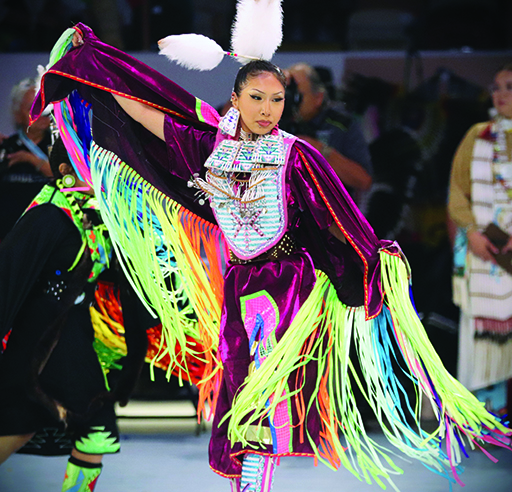
From fancy shawl and jingle dress to northern and southern traditional, from grass and Kiowa gourd to the always captivating fancy feather, 2,000+ dancers radiated generations’ worth of resistance to colonial assimilation over the three-day Gathering of Nations held in April.
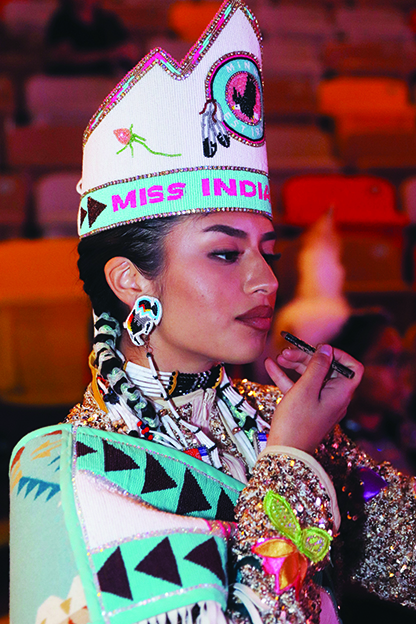
Beyond center stage and the competitive dancing, Gathering has become a rite of passage for some. A rite that demonstrates commitment to carrying on family tradition and ensuring legacy lives on. Such is the case with Makli BrownEagle (Spokane) who, while representing her fourth powwow crown, was invited to participate in the horse parade. As if that wasn’t cool enough, she was also celebrating her 17th birthday.
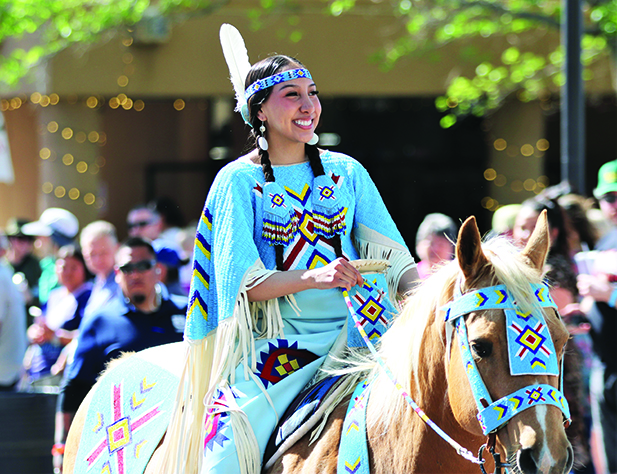
“I turned 17 yesterday. There’s no place I’d rather be celebrating than here at Gathering of Nations,” said Makli aka Miss Spokane. “Being here to represent the Spokane crown means so much. I was specifically invited because it’s the first time the Northwest is coordinating the horse parade. All the horses are from the Northwest and all their riders are Northwest powwow royalty. We brought down my great-great-grandpa’s horse regalia, which is well over 100 years old, for the horse I’ll be riding.
“My powwow style is Northern Traditional. It was my mom’s style and her mom’s mom style,” she added. “This is the only life I’ve known. I attended my first powwow four days after being born. I’ve been in powwow outfits and regalia since before I could walk, and I’ve been dancing for as long as I can remember.”
Makli’s mom beamed with pride as her daughter shared her story. “We’re so proud of her and how much she has accomplished on the powwow trail. Anywhere she goes, she proudly represents her family and her tribe.”
The rite of passage could even extend to those a long way away from their traditional homelands, but after hearing the call, found themselves forged by powwow purpose. Enter one 66-year-old Percy Warcloud Edwards (Colville). In 1985, he left Colville for California in pursuit of a better life and more opportunities. He recalls dancing as a small child, but never pursued it until 40 years later.
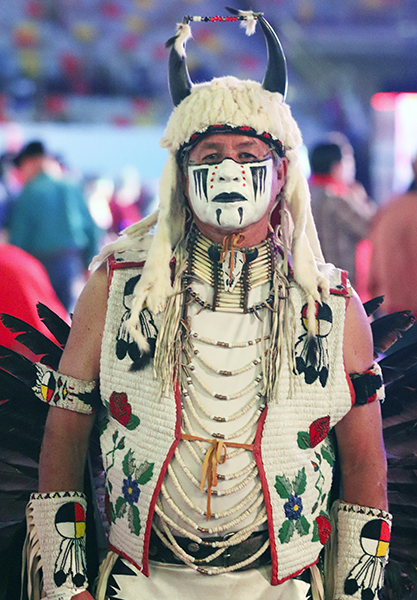
“I was the CEO of a couple companies. I did pretty good for myself and was able to take care of my parents when they were old and needed care,” reflected Percy. “Everything changed when my older brother had me work with eagle feathers for his regalia. That night I began to dream of dancing with the Old Ones. Something about the eagle and the feathers unlocked something inside of me. Since then, I’ve pursued a passion for dancing and attending as many powwows as I can.”
Percy’s passion led him to making one powwow outfit, then another, then another. He does his own sewing and his own beadwork, which allows him to not just craft his vision for extravagant powwow fits but craft a unique connection with those he dreams of. One such dream was of participating in a buffalo hunt wherein a legendary white buffalo appeared. What does real word Percy do? Craft white buffalo regalia of course.
“I believe in their power and their spirit,” said Percy. “Buffalo were nearly wiped to extinction, like our people during colonization, but they and we persisted. Today, I love visiting with and meeting new people, hearing stories from other reservations and territories. The best part of this whole experience has to be inspiring others that its never too late to learn and embrace the culture.”
Stories like Percy’s may resonate with many who either live far away from their tribe’s traditional homelands or grew up without elders and cultural teachers. The feelings from loss of connection can deter one from seeking out cultural celebrations or attending annual gatherings for fear of being othered. But as Percy eloquently explained, its never too late to learn and embrace culture. Gathering of Nations is a revered space because individuals are free to express their culture however they wish, while being embraced by the collective notion of indigeneity.
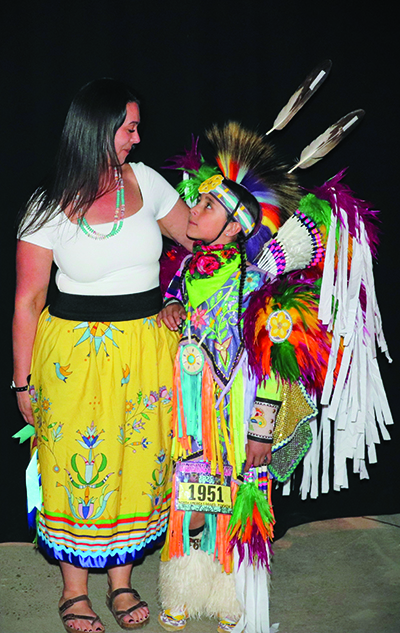
For indigenous youth, Gathering also serves as a teaching space. From interacting with other children from across Turtle Island to witnessing and absorbing the full spectrum of powwow performances at the highest level, there is endless opportunity to learn. As they learn, the youth can also teach. In fact, they may be the greatest teacher when it comes to inspiring and motivating others to embrace their traditional roots.
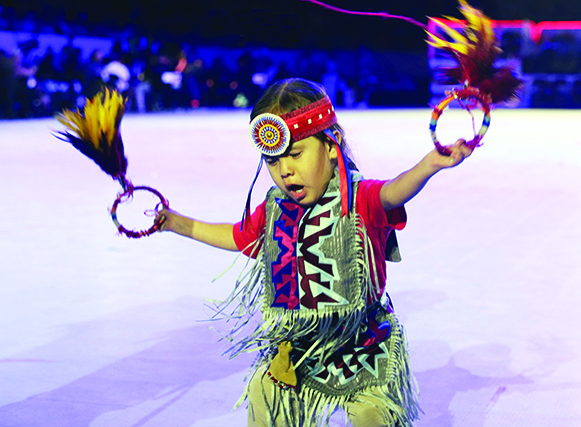
Three-year-old powwow dancer Okhis Homma Begay (Navajo/Choctaw) is proof of concept as he offers a reminder to parents and guardians of young Native children that there is no such thing as too young to participate. Tiny in stature but immense in power, young Okhis carries on the culture and traditions passed down by his father Angelo.
“He’s been dancing long before he could walk,” beamed proud papa Angelo as he watched his son take to the arena floor. “He was around 10 months old when he first started butt scooting and moving his arms around while watching me dance. He’s been to a powwow maybe every weekend since he was born. All that time he was watching and learning and now he dances to a beat all his own.”
It’s often said that the youth are our future, but they are the present, too. The youngest generation is full of leaders who lead in unique ways. Often it may be so unique and so subtle that their offerings may be overlooked and underheard by those not paying special attention. Such is the case with remarkable 11-year-old Tristan Brown (Northern Arapaho).
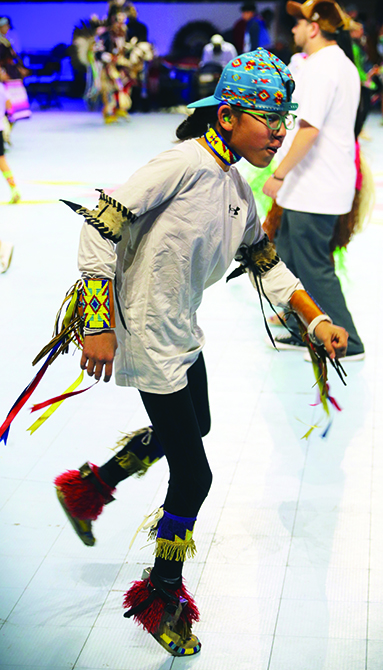
Tristan was born 24 weeks premature and lives with severe speaking and hearing impairment. However, his disabilities have not prevented him from being immersed in the powwow circuit since the womb. Both his parents are acclaimed dancers and singers who viewed their lifeway as medicine for their son.
Now, Tristan is proving just how able he is on the arena’s dance floor and, most incredibly, within a drum circle. Lack of speech hasn’t stopped Tristan from learning to make a high-pitched audible sound, similar to an eagle’s scream, that comes in handy when he’s performing with his father’s drum circle, The Horses.
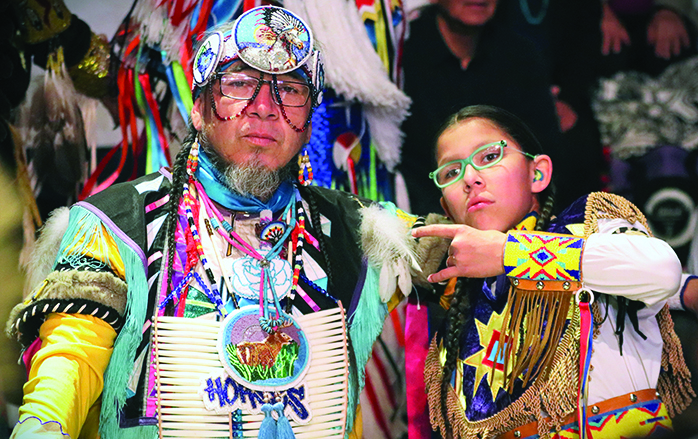
“He’s able to hit the highs on our songs. Proving he can sing within a powwow circle like everyone else,” said Tristan’s father, Kenny Brown Sr. “Being born so premature the doctor said he wouldn’t make it past 2 years. He’s 11 now.
“It’s time to bring awareness to kids living with disabilities throughout the world, the United States and all the tribes,” he continued. “Far too many times he’s been mistreated because of his disability because people don’t understand him. We have to be their voice. I have to be my son’s voice. But, you know, sometimes in our life we go through a big struggle. Our son goes through them every day. He teaches us how to be strong and what true strength really is.”
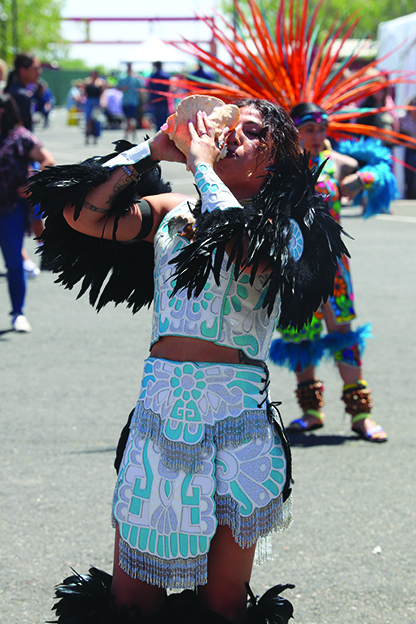
The sentiments expressed above by Kenny, Angelo, Percy and Makli offer just a glimpse into the crucial role Gathering of Nations plays in the lives of so many. From unity and community that transcends tribes and borders to the open sharing of the many nuances of Native American culture, there is an endless supply of inspiration created. That’s not even mentioning the elite level of powwow dance, music, and regalia on constant display to be oohed and awed over.
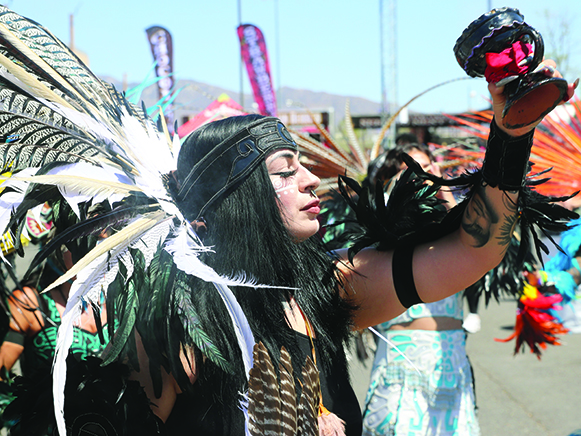
Gathering of Nations. A hub of triumph. An intersection where the traditional meets the contemporary and showcases that our culture isn’t just alive, it’s evolving, it’s thriving, and it remains as vibrant as the photographs accompanying this article.